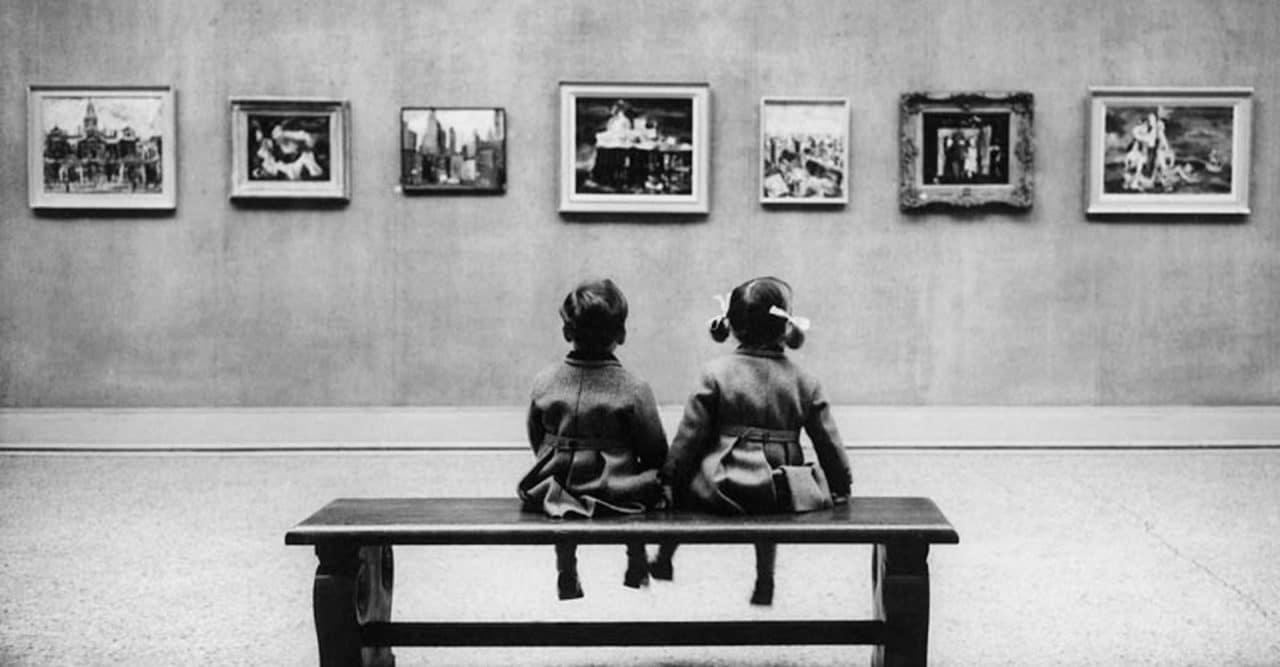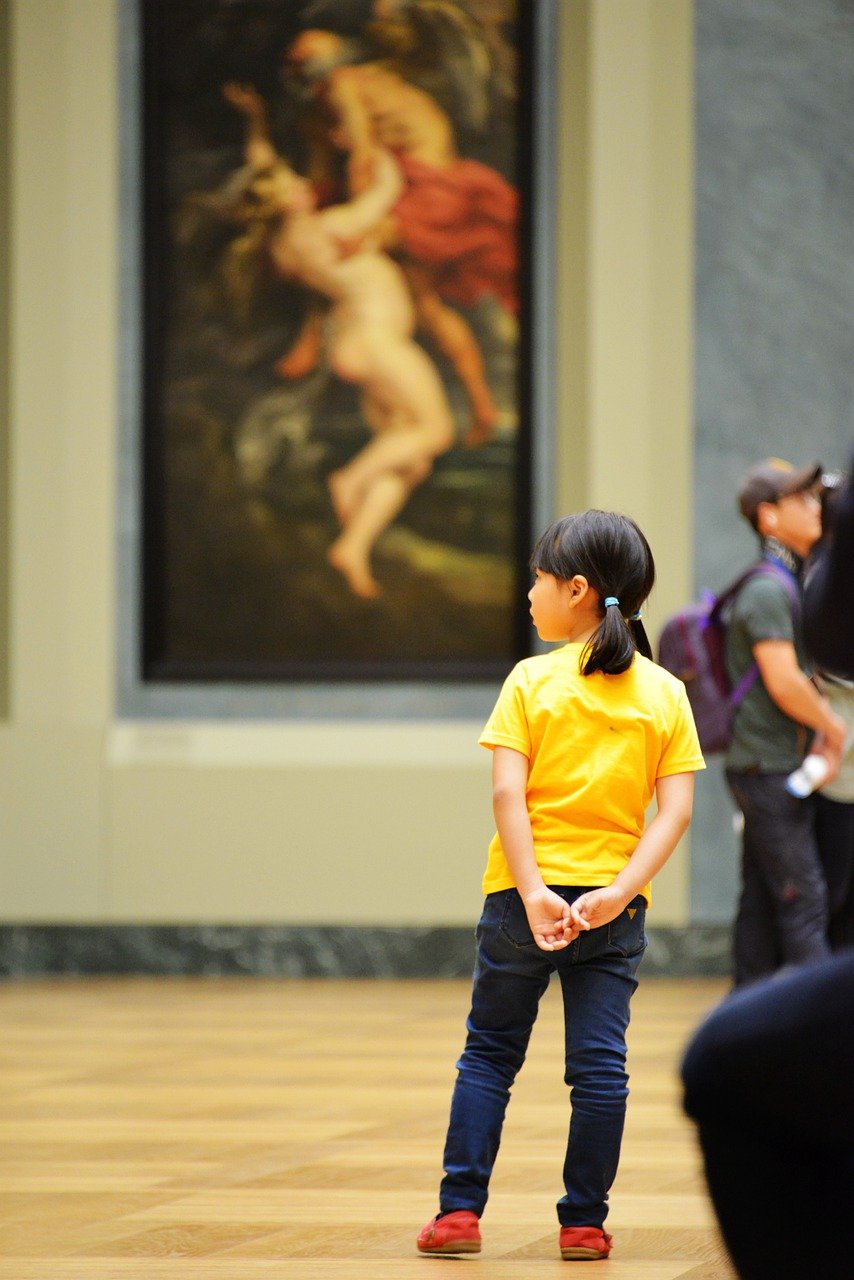The art of thinking

Art ‘is not a series of pleasant objects but a way of clarifying our mental life to ourselves.’
This statement (by a psychologist – Parsons, 1987 – who studies how children become interested in art objects) contrasts with the unfortunately widespread idea that art is mainly fun, entertainment, pleasant distraction, decoration…
Instead, it suggests that art is a powerful stimulus to reflection, reasoning, and feeling, and highlights the ways in which our minds attach meaning to artifacts. In fact, art triggers a complex interpretive and emotional psychic process in those who enjoy it and in those who produce it. Understanding art is a slow process that takes many years for children and is facilitated by the opportunity to experience, comment on, and discuss artistic artifacts with attentive and sensitive adults (Santi, 1997). In fact, understanding and appreciating art is a mental apprenticeship not only for children, but also for adults, whether or not they are art experts.
Art leads us to formulate concepts, beliefs and desires, on the one hand, about the content expressed and, on the other hand, about the possibilities that people have to represent such content. This means that a child learns something about a certain object that he draws himself or that he sees in a painting, and that it is possible to represent this certain object in a way that is recognizable to himself and then also to others, and that it is possible to do this with expressive modalities, that is, to communicate something (thoughts, emotions, desires…) also about the author of this representation.
The communicative function of a work of art is present in two of its crucial aspects: the indication of external referents and, at the same time, the evocation of the creator’s state of mind (Callaghan, 2003). In fact, children keep the manifest meaning of the symbol in their minds, updating it with a series of information (colors, shapes) and making inferences (all the more accurate as they grow and acquire cultural and social skills) about the mental state of the person who created the symbol.
Stimulating and analyzing the emotional interpretations that works of art evoke is extremely interesting: it is a privileged way to reveal the thinking of those who approach a work of art. This is especially true for children, since emotions are truly human qualities and it is easier for them to reason about what they know from direct experience.
We can see how a work of art is, from a psychological point of view, a real crossroads of relationships, a junction that allows the passage of hypotheses about thoughts, desires, intentions, emotions… both of the artist and of the users. This is what has led some scholars (including Freeman, 2004; Callaghan, 2003; Gilli, Gatti, 2004; Ruggi, Gilli, 2007) to say that art is a powerful communicative stimulus in which the need for interpretation and hermeneutics is fundamental, since there is no single conclusive truth about the meaning of a work of art.
 Art is a process of knowledge
Art is a process of knowledge
Knowledge of the world (if by world we mean any object, thought, or representable entity) and knowledge of the human mind, that is, of its intentions, desires, fears, thoughts… On the other hand, we all know how easily children can infer the intentions and state of mind of the author of a drawing from the drawing itself (Callaghan, 2003; Bloom, 2004).
Understanding art also means having knowledge and respect for the procedures, techniques, materials and styles that form its basis. Only in this way can educational intervention centered on art move from the realm of recreation, fun, and marginality to become a main street of culture.
A serious sensitization to the understanding and production of expressive artifacts is a very important tool for the construction of the child’s well-being and identity. Learning – as observed by Wood, Bruner and Ross (1976) – takes place through mediated experience, where the adult (or more experienced peer) acts as a scaffolder, that is, they offer support to the activity of the child who, as he becomes more expert, will be increasingly autonomous.
The adult and the more competent companion can also guide the younger child to the “zone of proximal development,” defined by Vygotsky as “the distance from the actual level of development determined in terms of autonomous problem-solving ability under the guidance of an adult or in collaboration with more capable peers” (1978, p.86), that is, the zone of development with the highest modes of functioning.
The classroom group is thus understood as a research community in the sense of Lipman’s philosophy for children, in which everyone shares with others the effort and pleasure of finding answers through argumentative discourse. Research arises from doubts and beliefs, which the class explores, evaluates and compares through reflection and criticism. In this way, a continuous negotiation of meanings, theories and world views is achieved and a path of social construction of knowledge is undertaken (Cosentino, 2003).
__________
Thoughts drawn from ART AND KIDS… LET’S TALK ABOUT IT.
Reflections Between Theory, Method and Laboratory – GABRIELLA MARIA GILLI, LUCIA COLOMBO, MONICA GATTI, SIMONA RUGGI Psychology & Art Unit – Catholic University of Milan.
The complete article was published by Scuola materna
for early childhood education, Brescia, 2, I-XIV ISSN 0302-2820
__________